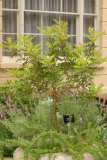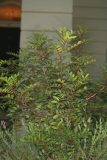Additional notes (click to expand)
Medicinal
Culpeper: ‘Lentiscus. Mastic tree. Both the leaves and the bark of it stop fluxes, spitting and pissing of blood, and the falling out of the fundament [=rectal prolapse].’
Culpeper, Nicholas. (1650). A Physical Directory . London, Peter Cole.
Nomenclature
Other Common Names; CHIOS MASTIC; LENTISCO; LENTISK; MASTIC TREE ; MASTIC RESIN PLANT
Other use
Notes: Used to make a type of chewing gum from the resin, also in the production of ‘Turkish Delight’. An aromatic plant, it has also been used for embalming, and making a glue used for affixing false beards!
Oakeley, Dr. H. F. . (2013). The Gardens of the Pharmacopoeia Londinensis.
link
Geographical distribution
- Africa, Macaronesia, Canary Is.
- Africa, Northern Africa, Algeria
- Africa, Northern Africa, Egypt
- Africa, Northern Africa, Libya
- Africa, Northern Africa, Morocco
- Asia-Temperate, Western Asia, Cyprus
- Asia-Temperate, Western Asia, Israel
- Asia-Temperate, Western Asia, Jordan
- Asia-Temperate, Western Asia, Lebanon-Syria
- Asia-Temperate, Western Asia, Turkey
- Europe, Southeastern Europe, Albania
- Europe, Southeastern Europe, Greece
- Europe, Southeastern Europe, Italy
- Europe, Southwestern Europe, France
- Europe, Southwestern Europe, Portugal
- Europe, Southwestern Europe, Spain
Pistacia lentiscus L.
Family: ANACARDIACEAEGenus: Pistacia
Species: lentiscus L.
Common names: Mastic
Pharmacopoeia Londinensis name: Lentiscus, Mastiche
Distribution summary: Mediterranean
Habit: Shrub
Hardiness: H5 - Hardy; cold winter
Habitat: Sunny, dry, rocky hills
Garden status: Currently grown
Garden location: Pharmacopoeia Londinensis 1618 'Leaves' (HSE 5), Olive tree bed (O)
Reason for growing: Medicinal
.JPG)
.JPG)
.JPG)
.JPG)

